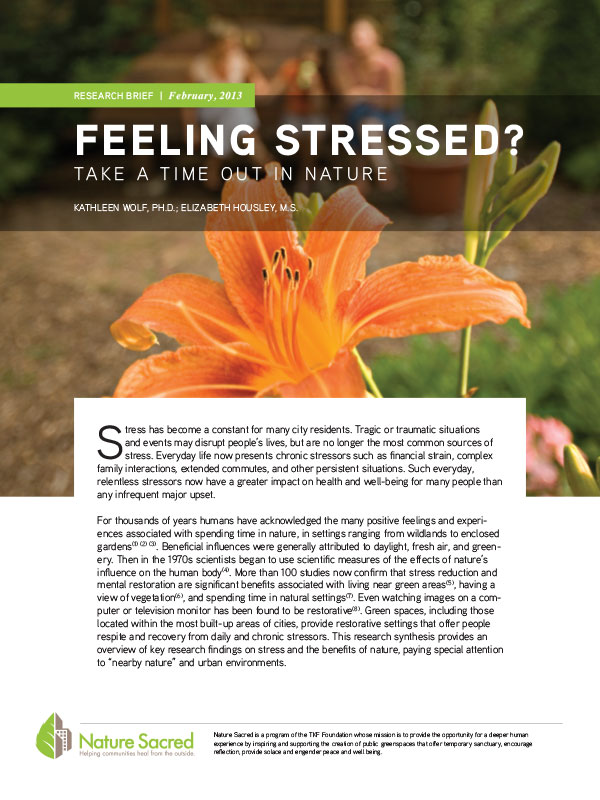Report
Feeling stressed? Take a time out in nature
Publication Date:
Stress has become a constant for many city residents. Tragic or traumatic situations and events may disrupt people’s lives, but are no longer the most common sources of stress. Everyday life now presents chronic stressors such as financial strain, complex family interactions, extended commutes, and other persistent situations. Such everyday, relentless stressors now have a greater impact on health and well-being for many people than any infrequent major upset.
For thousands of years humans have acknowledged the many positive feelings and experiences associated with spending time in nature, in settings ranging from wildlands to enclosed gardens(1) (2) (3). Beneficial influences were generally attributed to daylight, fresh air, and greenery. Then in the 1970s scientists began to use scientific measures of the effects of nature’s influence on the human body(4). More than 100 studies now confirm that stress reduction and mental restoration are significant benefits associated with living near green areas(5), having a view of vegetation(6), and spending time in natural settings(7). Even watching images on a computer or television monitor has been found to be restorative(8). Green spaces, including those located within the most built-up areas of cities, provide restorative settings that offer people respite and recovery from daily and chronic stressors. This research synthesis provides an overview of key research findings on stress and the benefits of nature, paying special attention to “nearby nature” and urban environments.
